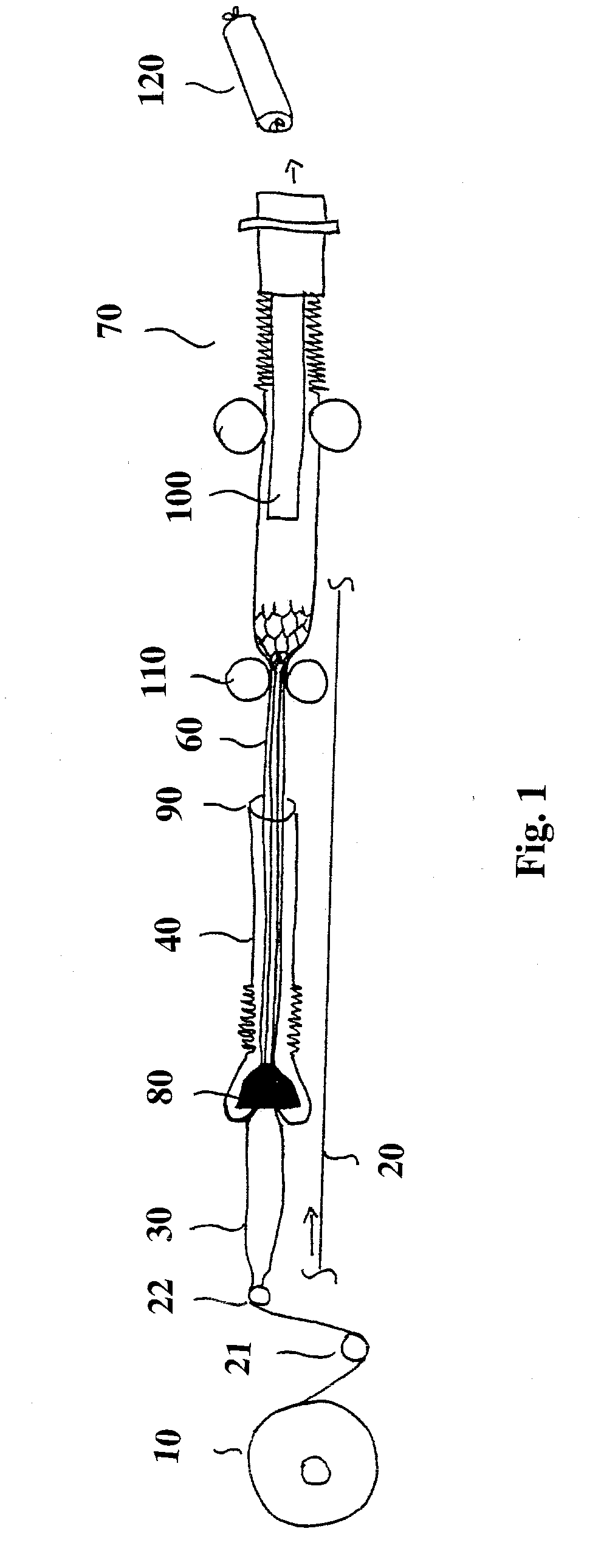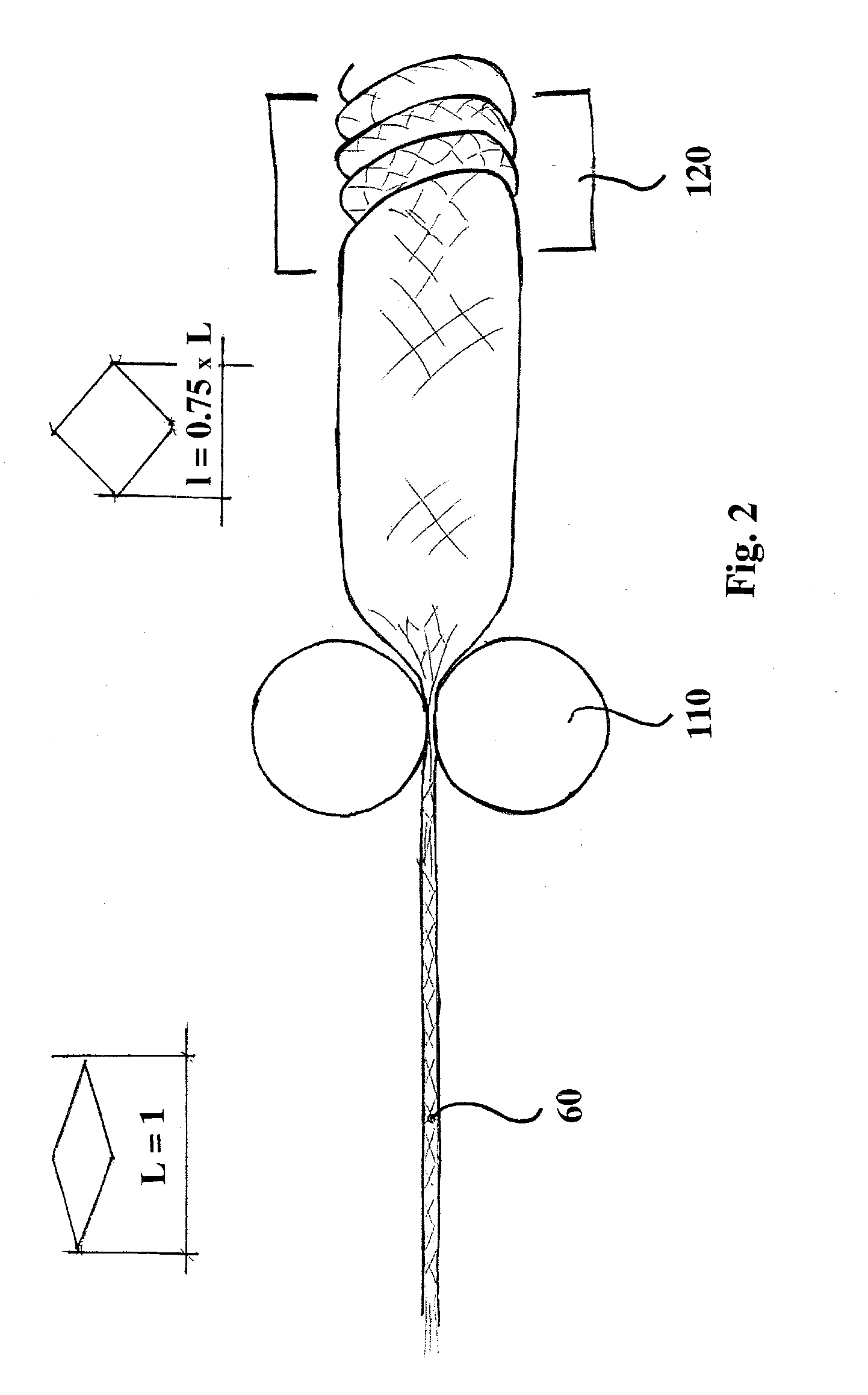Method for Producing a Netted Casing
a netted casing and net technology, applied in the field of netted casing production, can solve the problems of requiring particular apparatuses consuming energy and causing costs, unable to shirr such combinations of nets and carrier casings, and reducing the length of the net. , the effect of reducing the length of the carrier casing
- Summary
- Abstract
- Description
- Claims
- Application Information
AI Technical Summary
Benefits of technology
Problems solved by technology
Method used
Image
Examples
Embodiment Construction
[0020]It was surprisingly found that a tubular net having a regular or irregular shape may be combined in a controlled and permanent manner with the surface of a carrier casing without an adhesive or adhesion procedures, followed by shirring of the net / casing combination to give a compact stick. The properties of the net / casing combination are not altered since no adhesive treatment with subsequent drying is needed. A net / carrier casing combination is thus obtained where the form and the location of the desired bulges (protrusions or blisters) of the carrier casing are also retained during the production of the food product, thus yielding the desired final result. Moreover, said shirred net / carrier casing combination is ready for stuffing as such.
[0021]The method of the invention comprises the following steps:
[0022]Air or another inert gas is blown into the carrier casing, followed by pulling the carrier casing inflated to have a circular cross-section through a pleating head attach...
PUM
 Login to View More
Login to View More Abstract
Description
Claims
Application Information
 Login to View More
Login to View More - R&D
- Intellectual Property
- Life Sciences
- Materials
- Tech Scout
- Unparalleled Data Quality
- Higher Quality Content
- 60% Fewer Hallucinations
Browse by: Latest US Patents, China's latest patents, Technical Efficacy Thesaurus, Application Domain, Technology Topic, Popular Technical Reports.
© 2025 PatSnap. All rights reserved.Legal|Privacy policy|Modern Slavery Act Transparency Statement|Sitemap|About US| Contact US: help@patsnap.com



